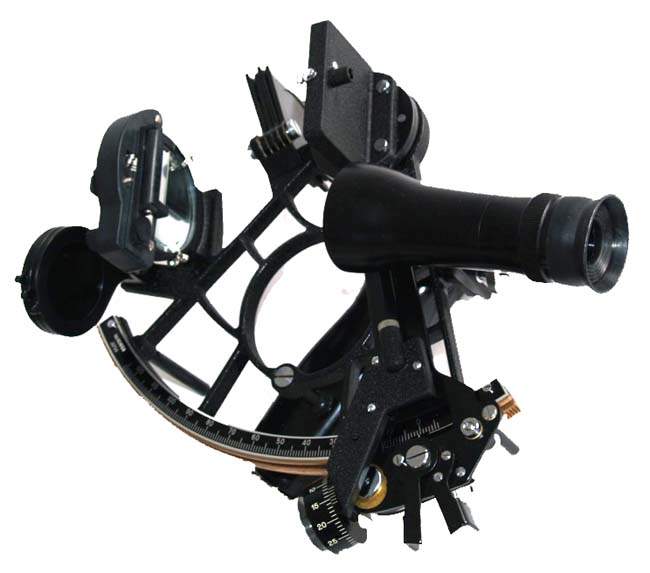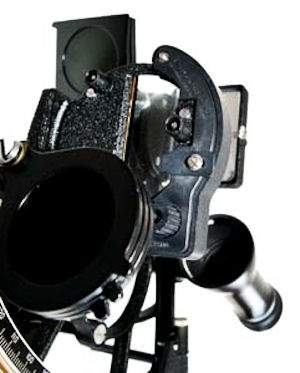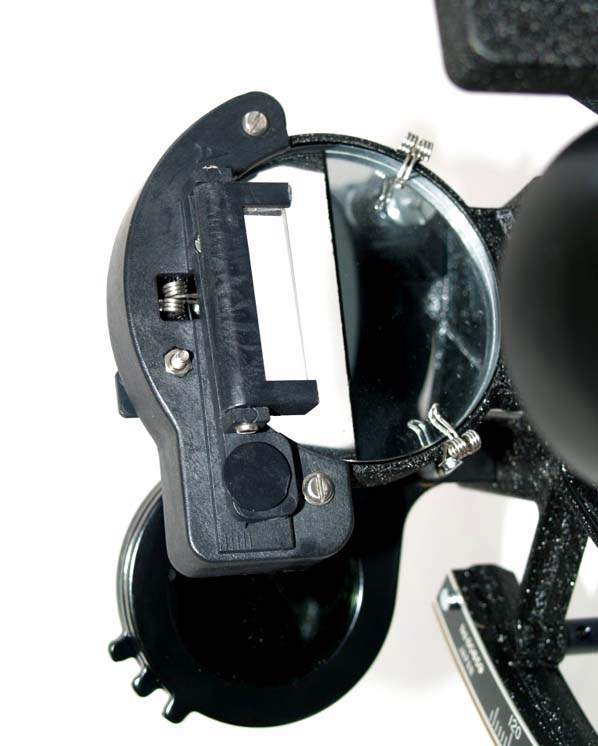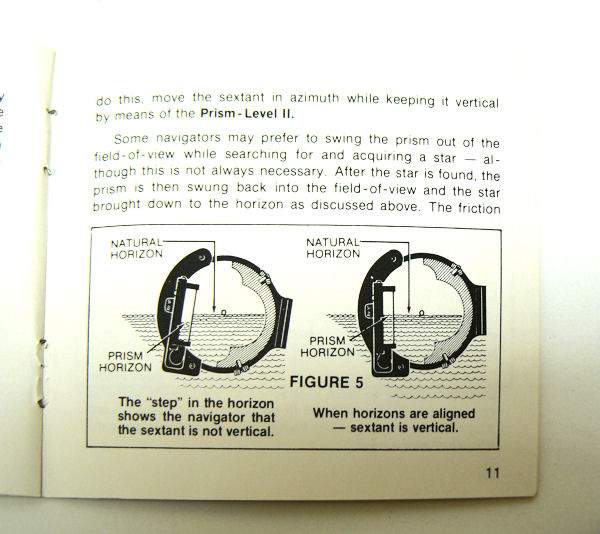(SEXTANT NOT INCLUDED)

The attachment on the horizon mirror is to assure the sextant frame is perpendicular to the horizon at the moment of taking a sight. It guarantees obtaining the correct He (altitude sextant). It is a perfect accessory for a serious student or an advanced navigator seeking something unique.
This is only the third time in over seven years that we have had a like new example of this nifty gadget available. They are very hard to come by. Made by Davis Instruments, who are now noted for its weather stations and marine gadgets, at one time had a product line that was primarily devoted to marine navigation. The original Prism-Level was developed for use on their plastic sextants which had a rectangular horizon mirror. It was a major advance in making sure that the sextant was perpendicular to the horizon at the time the sextant’s altitude was recorded. The old-fashioned way is to rotate your wrist so that the celestial body subtends an arc which at its lowest point just kisses the horizon which at that point is perpendicular to it. This serves the same purpose.
With electronic navigation becoming available to everyone starting in the 1970’s, the use of sextants began to wane. As a consequence, Davis discontinued this very useful accessory. If you follow the industry today, there has been a resurgence in the use of sextants by enthusiastic amateurs as well as professionals who enjoy the sense of accomplishment. One reason is that CelNav is still a required skill when obtaining advanced ocean going licenses. This is a very rare, nifty, addition to all sextants with 57 mm diameter circular horizon mirrors. That means it will fit C. Plath, Cassens & Plath, Freiberger and Tamaya sextants.

Back of Prism

Viewing side of prism

Diagram of what you see

QUALIFICATIONS: We are one of the few companies still selling navigation instruments that know anything about them. For purposes of judging whether Joel’s opinion counts, he was the editor of the chapter on sextants of the 1977 Edition of “Bowditch”, The American Practical Navigator, NAVPUB 9; a member of the U.S. Naval Academy Navigation Symposium Board, 1975 -1978; the author of a book on marine sextants, Cornell Maritime Press,1975, and the founding president of Nautech Maritime Corporation which partnered with Tamaya of Japan in the introduction of the MS 733 Spica, the MS 833, Jupiter, MS 933 Venus sextants and the famous NC-2 navigation computer, in the U.S. market. Joel is a retired Master Mariner, and held a U.S. Navy “D” Qualification as a Senior Skipper – Oceans. From 1995 until 2001, he was a Varsity Offshore Sailing Team Coach at the U.S. Naval Academy.
